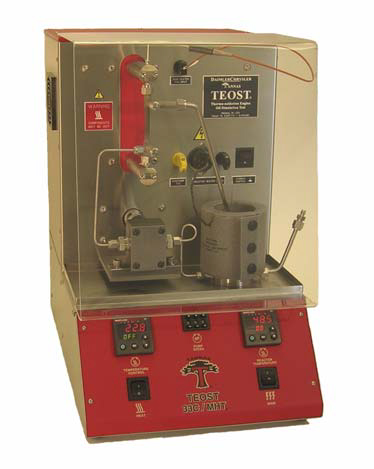TEOST® 33C (ASTM D 6335)
As a consequence of a close collaboration between Chrysler Corporation and Savant Laboratories, a small bench-top instrument was developed to simulate the engine operating stresses on the engine oil. Protocol 33C was applied to the study and deposition measurement of engine oils under turbocharger operating conditions.
Known as ASTM D6335, the original TEOST® protocol simulates the cyclic temperatures of 200° to 500+°C experienced in the turbocharger with a 12-cycle test run over a period of two hours requiring 100+ mL of test oil. The test obtains the weight of deposit forming on a resistively-heated hollow rod (TEOST® Depositor Rod) held within a casing as bulk oil flows by at a rate of 0.45 g/minute. The increase in rod weight caused by deposits is used as a measure of oil performance.
The TEOST® 33C was incorporated in the ILSAC GF-2 specification, API SJ category as well as Daimler/Chrysler’ OEM specification. Look for the test to be back in future ILSAC specifications.
The ability to change a variety of test parameters on the TEOST® apparatus lends itself to research work beyond the original 33C Protocol…
TEOST MHT® (ASTM D 7097)
The need for a bench test simulating high temperature (~250° to 300°C) deposits in the piston ring belt area lead to modifications of the TEOST® instrument. Work was initiated because of concerns that ring belt and piston under crown temperatures of 250°C and higher in modern high performance engines may cause a significant increase in carbonaceous deposits in these areas.
In the MHT test, 10 mL of sample oil is continuously passed over a pre-weighed steel Depositor Rod for 24 hours at 285°C. The increase in rod weight caused by deposits is used as a measure of oil performance.
Now known as ASTM D7097, the MHT® Protocol was incorporated in ILSAC GF-3 and GF-4 as well as API SL and SM categories.
The Chrysler/Tannas TEOST® test has become an alternative to using large, relatively variable, expensive and time-consuming engine test stands.
Tannas Thermo Oxidation Engine Oil Simulation Tester

